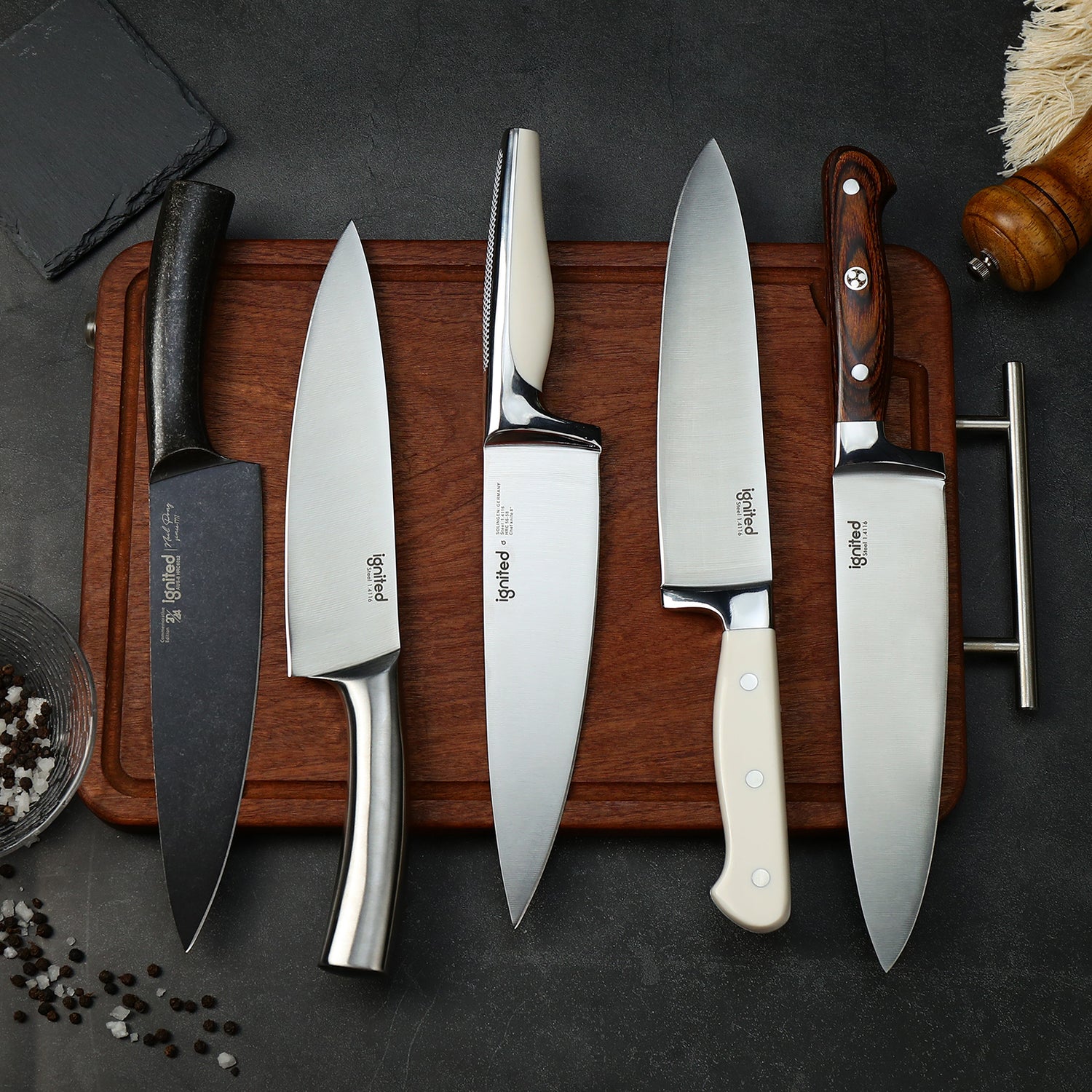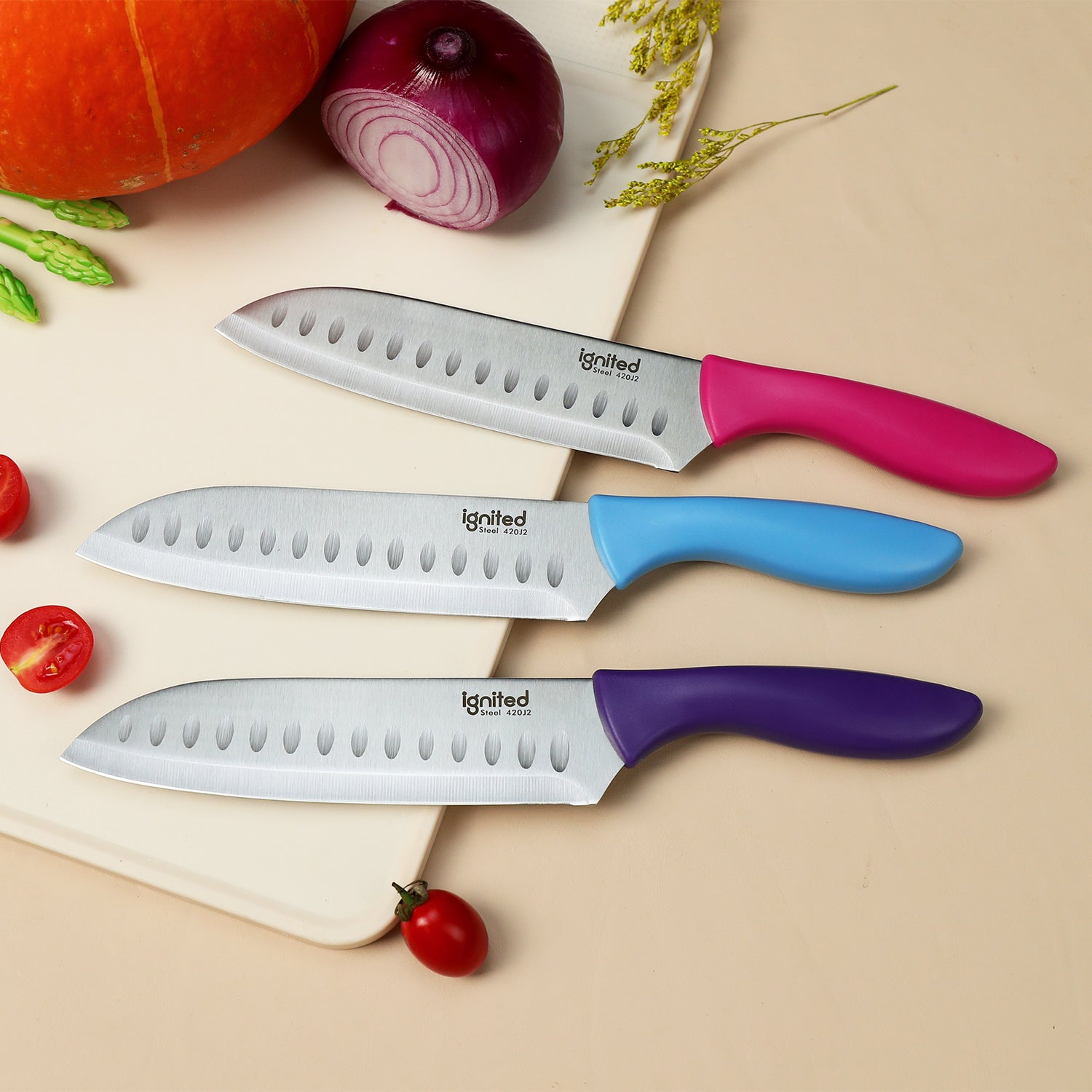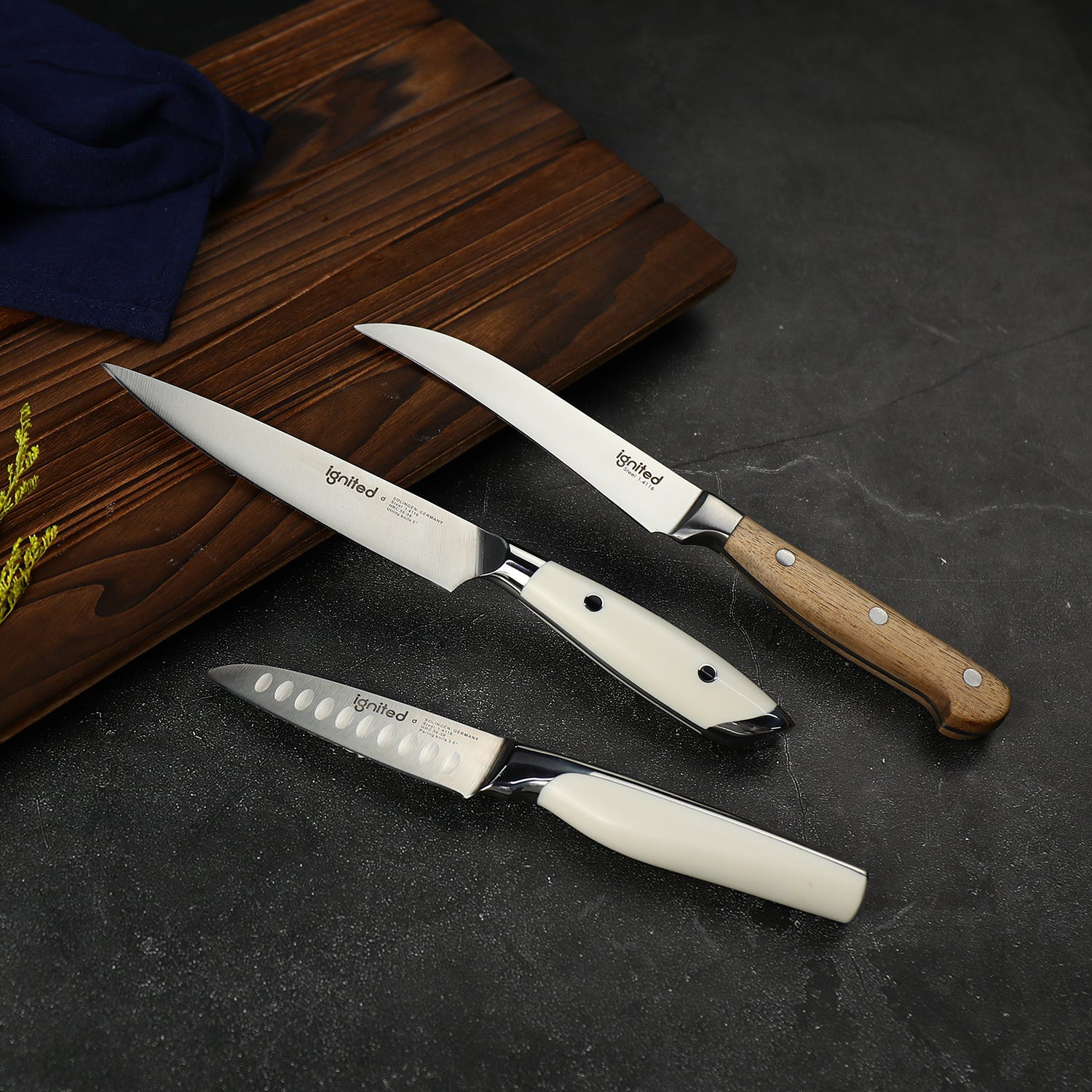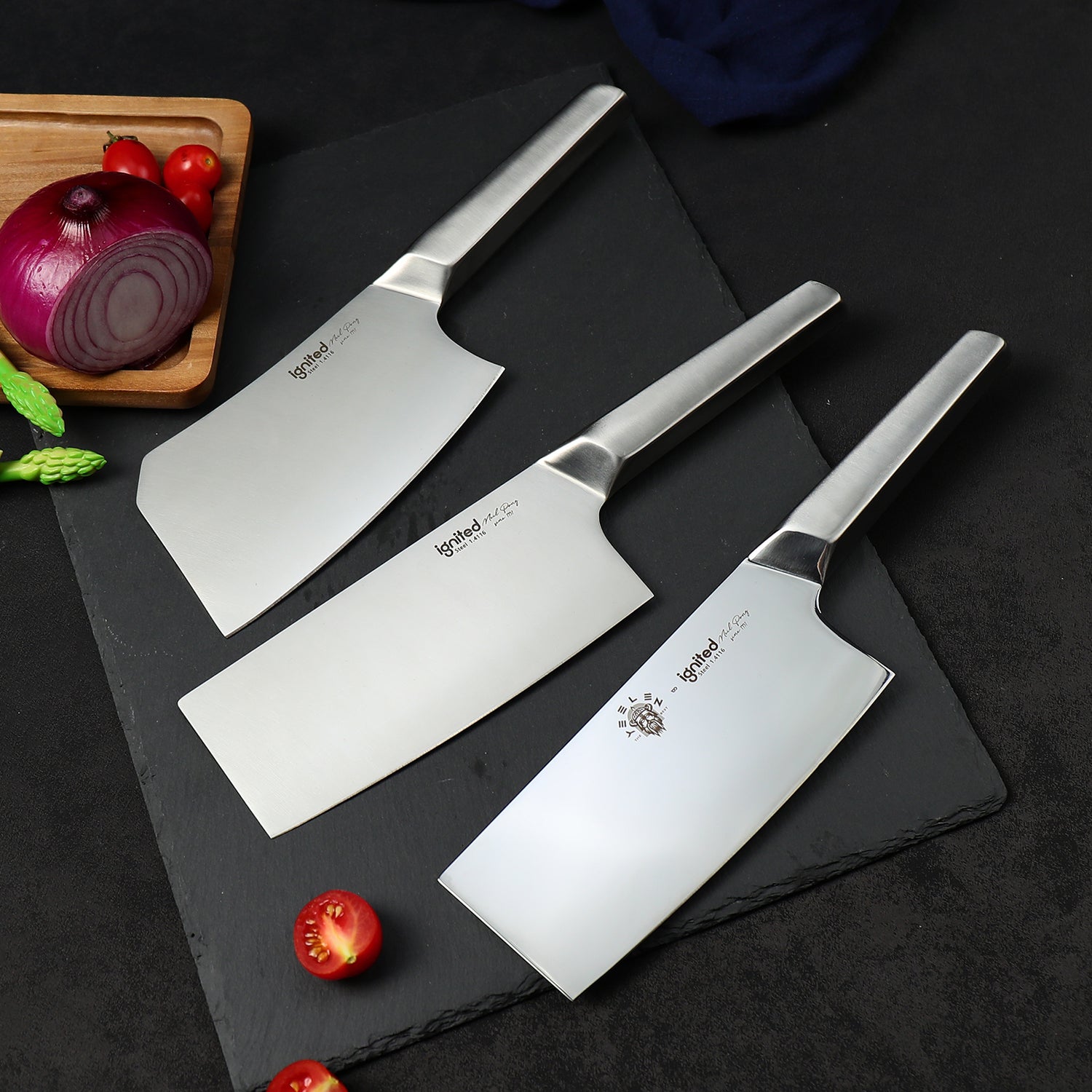When it comes to choosing a kitchen knife, most people focus on sharpness and blade material. But professional chefs know that weight and balance are just as important — if not more so — for comfort, control, and efficiency. In this post, we’ll explore how these two elements affect your cutting experience and how to choose the right knife for your needs.
What Does Knife Weight Really Mean?
Knife weight refers to how heavy the knife feels in your hand. Heavier knives often offer more cutting power, especially when slicing dense foods like squash or meat with bones. Lighter knives, on the other hand, give you agility and reduce fatigue for extended prep work like slicing vegetables or herbs.
- Heavier knives: Good for power and downward force
- Lighter knives: Ideal for speed, finesse, and longer use
Why Balance Is Everything
Balance refers to how the weight is distributed between the blade and the handle. A well-balanced knife feels like an extension of your hand and allows for better control and safety.
- Blade-heavy: Better for chopping, but may cause wrist fatigue
- Handle-heavy: More agile but can lack cutting power
- Perfectly balanced: Offers consistent control, especially for long sessions
To test balance, rest the knife horizontally on your index finger at the bolster (where blade meets handle). A balanced knife will stay level without tipping forward or back.
Quick Comparison Table
| Feature | Heavier Knife | Lighter Knife |
|---|---|---|
| Cutting Power | High (great for meat, root veg) | Lower, requires more force |
| Fatigue | More tiring with long use | Ideal for long prep sessions |
| Control | Stable, less agile | More agile, faster slicing |
| Precision | Better for force-based tasks | Better for delicate work |
How Chefs Choose Their Knives
“The best knife is the one that disappears in your hand — you don’t think about it, you just cut.”
— Chef Luca M., Michelin-starred chef
Professional chefs often test multiple knives before committing. They pay attention to how the knife feels during repetitive tasks, how well it responds to small movements, and whether it causes strain over time.
They also match weight and balance to their style:
- Western-style chefs: Prefer slightly heavier, forward-balanced blades
- Japanese-style chefs: Often use lighter, nimble knives for precise cuts
Final Thoughts
A sharp blade is important, but how a knife feels in your hand matters just as much. A well-balanced knife that fits your grip and cooking style can improve efficiency, reduce fatigue, and even prevent accidents.
At Ignited Cutlery, we design our knives with ergonomic balance and optimal weight in mind — so whether you're prepping a quick meal or running a dinner service, your knife works with you, not against you.




